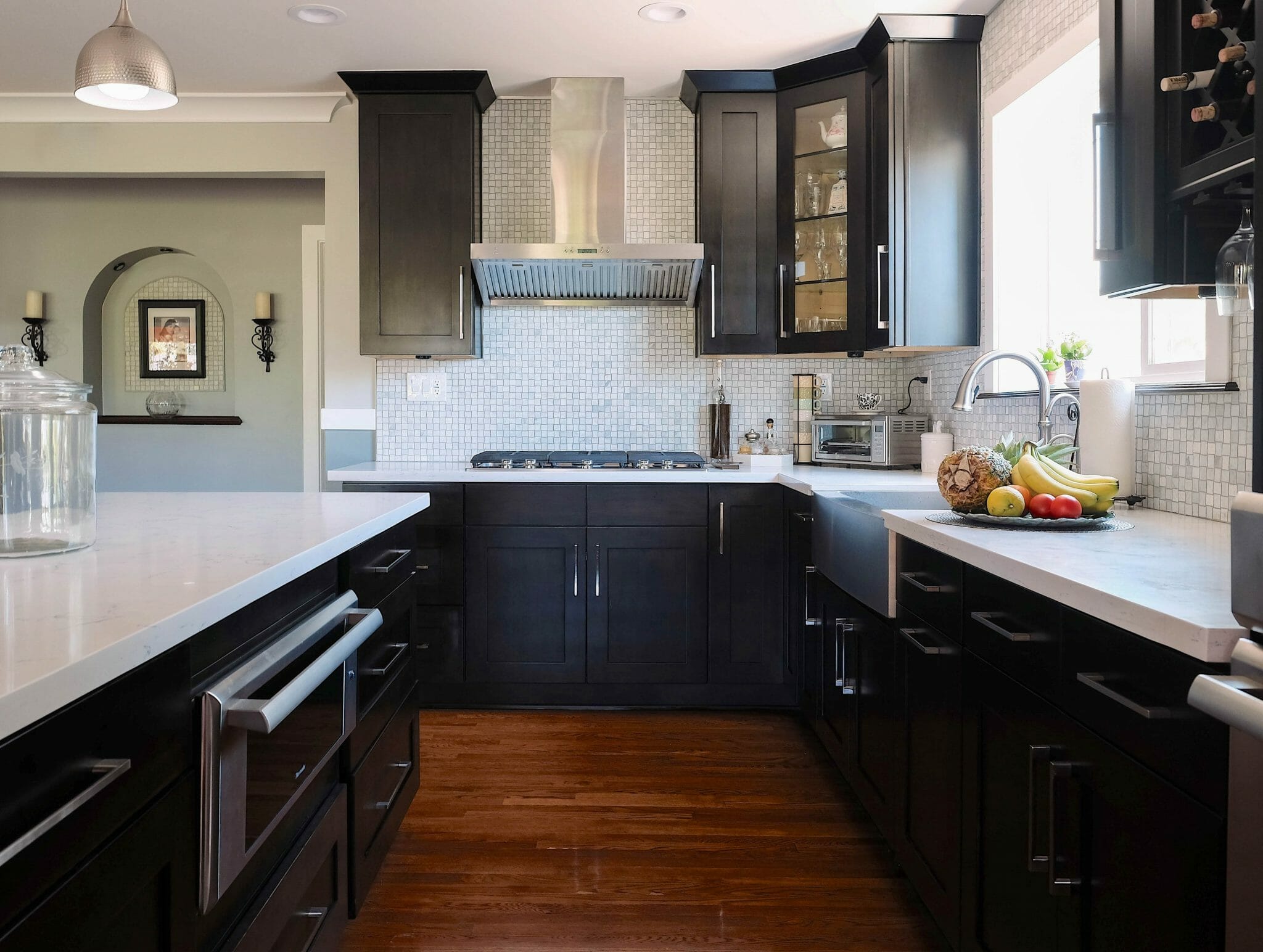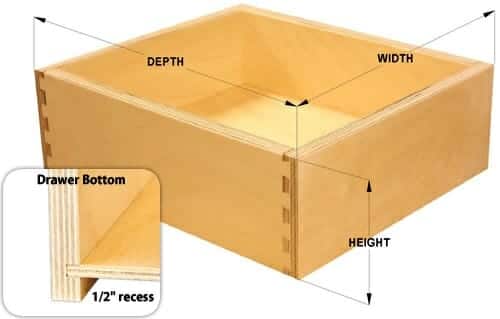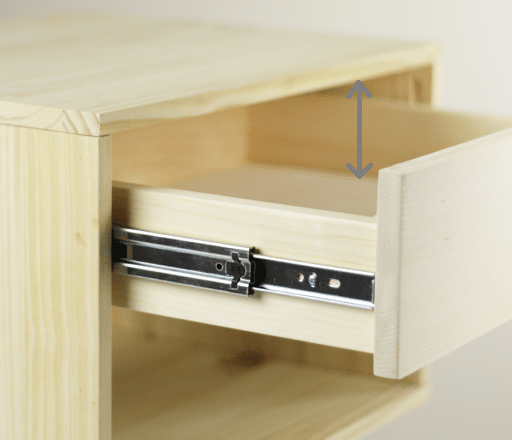
19 Feb Measuring Kitchen Cabinet Drawers the Right Way
Getting the Most Out of Your Drawers
In many ways, the drawer kitchen cabinet situation of your home can be the ultimate limitation on your use of the space. Your kitchen can be designed well, look phenomenal, and implement the kitchen work triangle perfectly. It could have beautiful cabinets matching your walls and backsplash. But the ultimate purpose of cabinets is to be functional and provide utility to your cooking, and if you are struggling with utensil access then it may come down to your kitchen drawers.
How Drawers are Measured
This diagram is indicative of how the overwhelming majority of RTA cabinet makers will attempt to show the dimensions of their drawers. It isn’t disingenuous, or dishonest– but it doesn’t show the full picture or indeed the practical capabilities of the storage.
A drawer is not, as the diagram to the right may imply, intended to be a glorious monument to external height, depth, or width. A kitchen cabinet drawer is a container. It holds things. And as such, the only measurements that actually matter when it comes to drawers involve actual height clearance as well as cubic space of storage.
Actual Drawer Space Height
When you visit cabinet makers in Los Angeles or any other major city you can tour their showroom and see beautiful kitchen mockups where you’re encouraged to pull out drawers, open cabinet doors, and generally inspect the layout. Online sites will display diagrams proudly outlining drawer dimensions (always external measurements) leaving you with a completely false sense of what the drawer can actually contain.
One of the major contributing factors is height clearance– something usually only discussed by woodworkers and DIY’ers. This is because if you buy from 10 different online RTA cabinet sites, you are virtually guaranteed to get 10 different total storage volumes from drawers that looked the same from the outside. Their height clearances will vary dramatically due to differences in the measurement from the box bottom to the upper rail of the cabinet.
If two drawers look exactly alike but one manufacturer’s cabinet upper rails are ½” taller, that’s fully a ½” you have lost in usable drawer space. You want your drawers to slide in and out without having to sift your hands through your utensils in order to flatten them every time it needs to close. Or worse, a stuck drawer with utensils butting up against the inside of the upper rail.
Cubic Storage Space
Real cubic storage space of a drawer is going to include three elements: actual drawer space height, internal width, and internal depth. These are the functional dimensions that matter when it comes to using the drawer in your kitchen and not dreading having to open the thing.
When talking to a cabinet retailer or manufacturer, it is important to ask them for these accurate measurements to know what you’re getting yourself into. If they avoid your question or try to suggest that every kitchen cabinet warehouse is going to deliver roughly the same cubic storage space, you may be getting less than you bargained for from their drawers.






Sorry, the comment form is closed at this time.